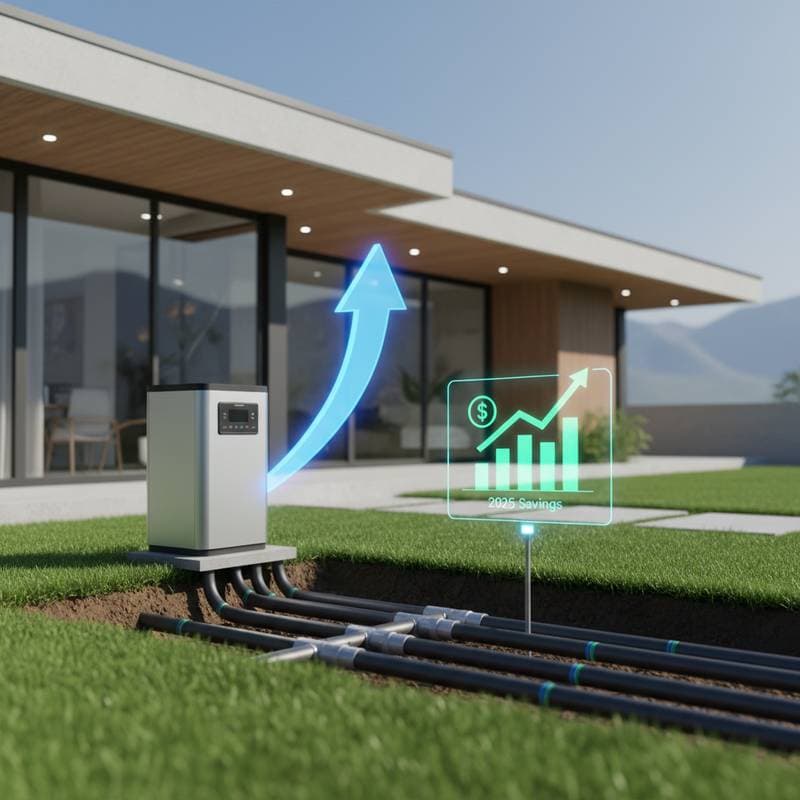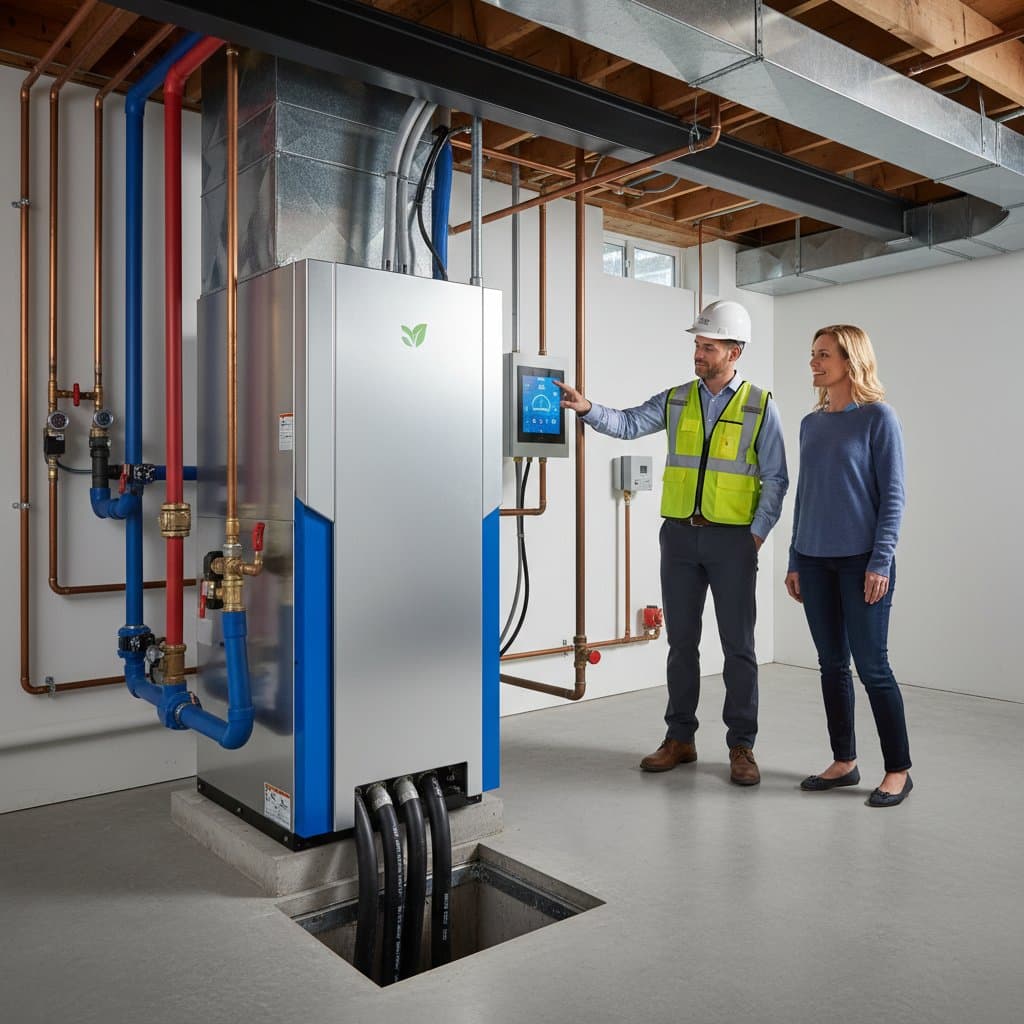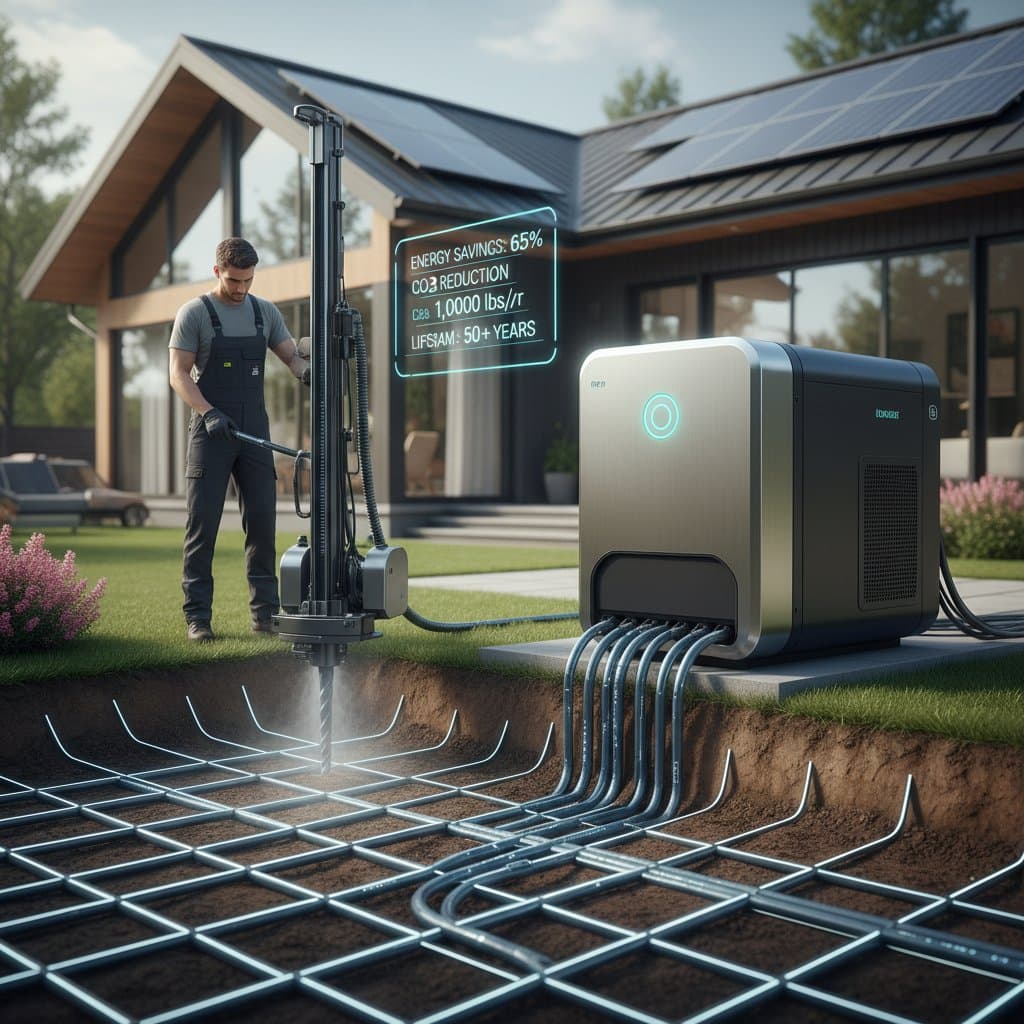Slash AC Bills by 60% with Geothermal Cooling in 2025
Why Geothermal Cooling Is Gaining Traction
As summer heat waves intensify, the sting of high electricity bills from traditional air conditioning becomes harder to ignore. In 2025, a growing number of homeowners in the United States are discovering relief through geothermal cooling, with many reporting savings of up to 60 percent on their AC costs. This shift is fueled by declining equipment prices, substantial government incentives, and increasing recognition of ground-source heat pumps (GSHPs) as a powerful alternative to conventional systems. This article explores the technology behind geothermal cooling, highlights current market trends, and provides practical steps to help you save money and reduce your carbon footprint.
Understanding Geothermal Cooling Technology
How Ground-Source Heat Pumps Operate
A ground-source heat pump leverages the earth’s stable underground temperature, which ranges from 45 to 75 degrees Fahrenheit depending on depth, to regulate indoor climates. During cooling mode, a refrigerant fluid circulates through a buried loop, absorbing heat from inside your home and dissipating it into the ground. This process reverses for heating, making GSHPs a versatile solution for year-round comfort. The system’s efficiency and reliability stem from the earth’s consistent thermal properties, unaffected by outdoor weather extremes.
Advantages Over Traditional Air Conditioning
- Superior Efficiency: GSHPs boast a coefficient of performance (COP) of 4 to 5, delivering four to five kilowatts of cooling per kilowatt of electricity used, compared to a COP of 2 to 3 for standard AC units.
- Stable Performance: Unlike conventional systems that lose efficiency in extreme heat, GSHPs maintain consistent output due to stable ground temperatures.
- Durability: Underground loops can endure over 50 years, and indoor components often outlast traditional AC units by 20 to 30 percent.
Market Shifts and Opportunities in 2025
Declining Costs and Enhanced Technology
Recent data from the U.S. Department of Energy indicates that the average cost of installing a residential GSHP system has fallen from $27,000 in 2020 to $19,500 in 2025, a drop of 28 percent. This reduction is driven by innovations such as mass-produced polymer loop pipes, advanced inverter technology for smaller, more efficient compressors, and heightened market competition spurred by federal incentives. These developments make geothermal cooling more accessible to a wider range of homeowners.
Financial Incentives Boosting Adoption
Government and utility programs are accelerating the transition to geothermal systems. The Inflation Reduction Act offers a federal tax credit covering 30 percent of installation costs, up to $9,000, for qualifying homes through 2025. Additionally, states like California, New York, and Texas provide rebates between $1,500 and $3,000, while many utilities offer cash rewards for joining smart-grid initiatives. These incentives significantly lower the upfront investment, enhancing the appeal of GSHPs.
Practical Steps to Implement Geothermal Cooling
Start with a Home Energy Assessment
Before investing, arrange a professional energy audit to identify inefficiencies in your home. Focus on insulation weaknesses, air leaks, and the condition of existing ductwork, as these factors can impact any cooling system’s performance. Addressing these issues ensures that a GSHP operates at peak efficiency, maximizing your savings.
Select the Appropriate Loop System
Choosing the right loop design depends on your property’s layout. Horizontal loops suit larger lots with ample surface area and are less expensive to install, while vertical loops, drilled 150 to 400 feet deep, fit compact urban spaces. Hybrid systems offer a balanced approach, combining elements of both to optimize cost and effectiveness.
Ensure Proper System Sizing
Accurate sizing prevents energy waste from oversizing or insufficient cooling from undersizing. Work with a contractor to perform a Manual J load calculation, factoring in local climate trends, home orientation, and occupancy patterns. This tailored approach guarantees optimal performance and comfort.
Real-World Impact and Savings
In Austin, Texas, a four-family rental property reduced annual AC costs from $2,400 to $950 after installing a GSHP in 2025, achieving a 60 percent savings. The payback period, factoring in federal and state incentives, was just seven years. Similarly, a single-family home in Burlington, Vermont, cut cooling electricity costs from $360 to $144 annually, while avoiding 1.8 tons of carbon dioxide emissions each year. These examples underscore the financial and environmental benefits of geothermal cooling.
Moving Forward with Geothermal Solutions
Geothermal cooling is no longer a distant concept but a practical, cost-effective option for homeowners in 2025. By slashing AC bills by up to 60 percent, extending equipment lifespan, and supporting a cleaner energy grid, GSHPs offer a compelling alternative to traditional systems. Take the first step by scheduling an energy audit, exploring incentive programs, and consulting with qualified installers. Transform your home’s comfort and efficiency with this innovative technology today.








